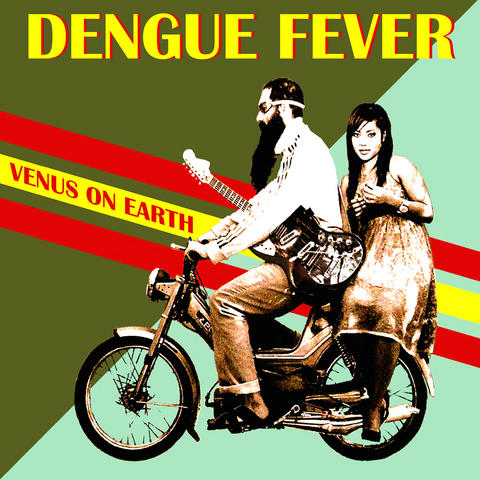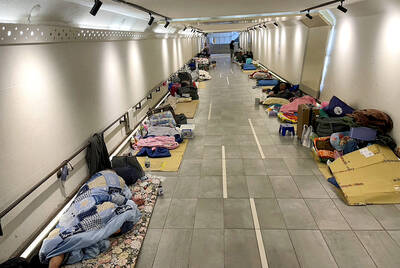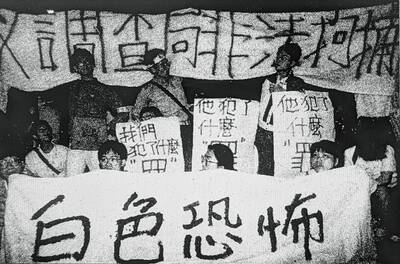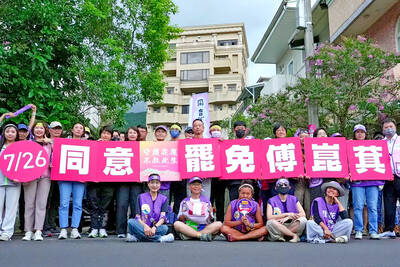Dengue fever is a Los Angeles band featuring a Cambodian-born singer and five American alt-rockers who regularly embarrass her onstage.
On the cover of its new album, Venus on Earth, the guitarist Zac Holtzman, with a long beard and goggles, drives a scooter with the vocalist Chhom Nimol sitting demurely behind him sidesaddle, the way a good Cambodian girl would ride through the streets of Phnom Penh. Dengue Fever, which specializes in an unlikely mix of 1960s Cambodian pop, rock and other genres, is a lot like that image. Propriety and smart aleck indie rock race by, blurring together.
It is a band of rollicking lightness that keeps coming up deep. At a recent show in the Echo Park neighborhood here, the male members were downright goofy, but Chhom, singing mostly in Khmer and dressed in shimmering Cambodian silk garments she designs herself, looked like old-school royalty, a queen before the hipoisie. No wonder she seemed to roll her eyes from time to time onstage. But after the set, when she lighted a candle onstage to honor those killed by the Khmer Rouge, her voice broke and tears ran down her face.

PHOTO COURTESY OF KEVIN ESTRADA
"I think we balance each other out," Holtzman said in a recent interview. "She'll bring the whole place to a hush, and that would be a long night if it was just that. And then we smash the place up."
Dengue Fever formed after the Farfisa organ player Ethan Holtzman, Zac's brother, traveled to Cambodia in 1997, discovered 1960s Cambodian pop and returned with a stack of cassettes. This was not the sort of roots-driven folk sounds ethnomusicologists crave; this was locally produced, gleefully garish trash infused with the surf guitar and soul arrangements that Armed Forces Radio blasted across the region during the Vietnam War. It flourished until the Khmer Rouge came to power in the 1970s and functionally dismantled Cambodian culture.
Dengue Fever's music is a tribute to that lost pop. But the six members of Dengue Fever form a quintessential Los Angeles crew, with a mix of backgrounds and interests that seems fitting in a region with the largest Cambodian population in the US (in Long Beach, south of downtown Los Angeles) and a flourishing indie rock scene (in the hills east of Hollywood). The band is the musical equivalent of that ultimate modern Los Angeles marker, the polyglot strip-mall sign. It too offers a cultural mash-up; beyond the obscure Cambodian pop you can hear psychedelia, spaghetti western guitars, the lounge groove of Ethiopian soul and Bollywood soundtracks. Seeing Hands, on the new album, has an almost Funkadelic groove, while Sober Driver is an all but emo complaint about a guy who drives the cute girl everywhere and gets nowhere.

PHOTO COURTESY OF KEVIN ESTRADA
Now Dengue Fever is starting to make its mark far from its hometown. The band recently returned from the Womex world music festival in Seville, Spain, where it was one of a handful of acts to play showcase performances. British publications have included it in "next big thing" roundups, and Dengue Fever's songs have been on television and film sound tracks, including Jim Jarmusch's Broken Flowers. A new documentary, Sleepwalking Through the Mekong, that follows the group on its first trip as a band to Cambodia, seems likely to gain it further notice.
"The underground people are getting hip to world music, and the world music side is getting hip to how you don't have to have a dreadlock wig and Guatemalan pants to be cool," said the bassist Senon Williams, sitting in his backyard with Chhom and Zac Holtzman.
"Now that Nimol is going to start singing more in English," he added, "it's making new things possible for us. Nimol really wants to connect with the American audience more now."
Dmitri Vietze, a publicist and marketer for many global music acts, sees the band as "part of a larger developmental pattern" in world music. "Can you stick them in the world-music bin at brick and mortar retail stores?" Vietze asked. "I don't know. But ... they are a part of a huge and promising future."
Older generations of Cambodians in California are sometimes critical. "They don't want me to show off too much of my dress," she said. "They always tell me, 'Don't forget you're a Cambodian girl.'" But the younger generation responds to Dengue Fever and even breakdances to its reinvention of a mongrel music that is itself a reinvention of a mongrel music from the West.
Folk music it's not, but in one crucial way Dengue Fever has folk resonances. To Chhom and other young Cambodians in the States, pop singers like Sinn Sisamouth and Ros Sereysothea, who died in a labor camp in Cambodia in the 1970s, hit a nerve that blues singers or hillbilly bands do for many Americans: the music takes listeners back home, to a home that doesn't precisely exist anymore.

From the last quarter of 2001, research shows that real housing prices nearly tripled (before a 2012 law to enforce housing price registration, researchers tracked a few large real estate firms to estimate housing price behavior). Incomes have not kept pace, though this has not yet led to defaults. Instead, an increasing chunk of household income goes to mortgage payments. This suggests that even if incomes grow, the mortgage squeeze will still make voters feel like their paychecks won’t stretch to cover expenses. The housing price rises in the last two decades are now driving higher rents. The rental market

July 21 to July 27 If the “Taiwan Independence Association” (TIA) incident had happened four years earlier, it probably wouldn’t have caused much of an uproar. But the arrest of four young suspected independence activists in the early hours of May 9, 1991, sparked outrage, with many denouncing it as a return to the White Terror — a time when anyone could be detained for suspected seditious activity. Not only had martial law been lifted in 1987, just days earlier on May 1, the government had abolished the Temporary Provisions Effective During the Period of National Mobilization for Suppression of the Communist

When life gives you trees, make paper. That was one of the first thoughts to cross my mind as I explored what’s now called Chung Hsing Cultural and Creative Park (中興文化創意園區, CHCCP) in Yilan County’s Wujie Township (五結). Northeast Taiwan boasts an abundance of forest resources. Yilan County is home to both Taipingshan National Forest Recreation Area (太平山國家森林遊樂區) — by far the largest reserve of its kind in the country — and Makauy Ecological Park (馬告生態園區, see “Towering trees and a tranquil lake” in the May 13, 2022 edition of this newspaper). So it was inevitable that industrial-scale paper making would

Hualien lawmaker Fu Kun-chi (傅?萁) is the prime target of the recall campaigns. They want to bring him and everything he represents crashing down. This is an existential test for Fu and a critical symbolic test for the campaigners. It is also a crucial test for both the Chinese Nationalist Party (KMT) and a personal one for party Chairman Eric Chu (朱立倫). Why is Fu such a lightning rod? LOCAL LORD At the dawn of the 2020s, Fu, running as an independent candidate, beat incumbent Democratic Progressive Party (DPP) lawmaker Hsiao Bi-khim (蕭美琴) and a KMT candidate to return to the legislature representing